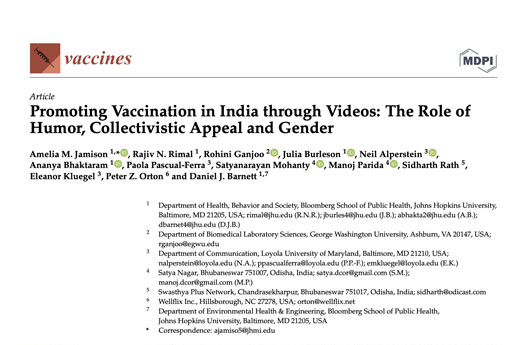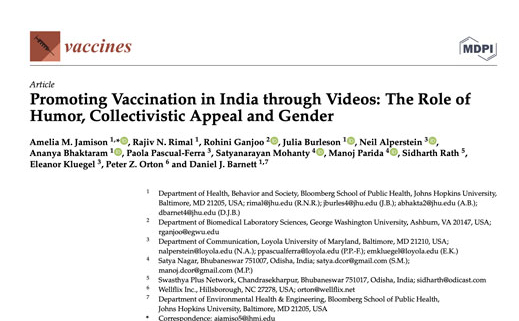Promoting Vaccination in India through Videos: The Role of Humor, Collectivistic Appeal and Gender
Vaccination hesitancy is a barrier to India’s efforts to control the COVID-19 pandemic. Considerable resources have been spent to promote COVID-19 vaccination, but evaluations of such efforts are sparse. Our objective was to determine how vaccine videos that manipulate message appeal (collectivistic versus individualistic), tone (humorous versus serious), and source (male versus female protagonist) toward vaccines and vaccination. We developed eight videos that manipulated the type of appeal (collectivistic or individualistic), tone of the message (humor or serious), and gender of the vaccine promoter (male or female) in a 2 x 2 x 2 between-subjects experiment. Participants (N = 2349) were randomly assigned to watch one of eight videos in an online experiment. Beliefs about vaccines and those about vaccination were obtained before and after viewing the video. Manipulation checks demonstrated that each of the three independent variables was manipulated successfully. After exposure to the video, beliefs about vaccines became more negative, while beliefs about vaccination became more positive. Humor reduced negative beliefs about vaccines. Collectivism and protagonist gender did not affect beliefs about vaccines or vaccination. Those able to remember the protagonist’s gender (a measure of attention) were likely to develop favorable beliefs if they had also seen the humorous videos. These findings suggest that people distinguish beliefs about vaccines, which deteriorated after exposure to the videos, from beliefs about vaccination, which improved. We recommend using humor when appropriate and focusing on the outcomes of vaccination, rather than on the vaccines themselves.
Source: Promoting Vaccination in India through Videos: The Role of Humor, Collectivistic Appeal and Gender
- Caroline Jacoby
- cjacoby@jhu.edu
Views 983




